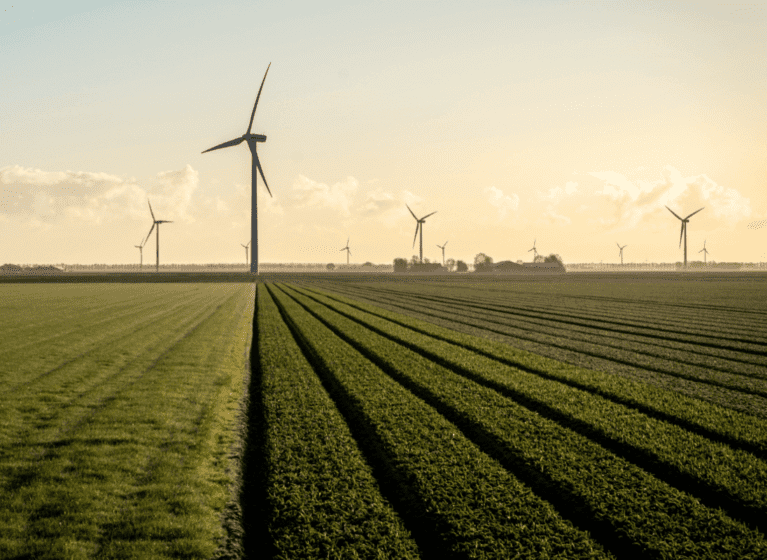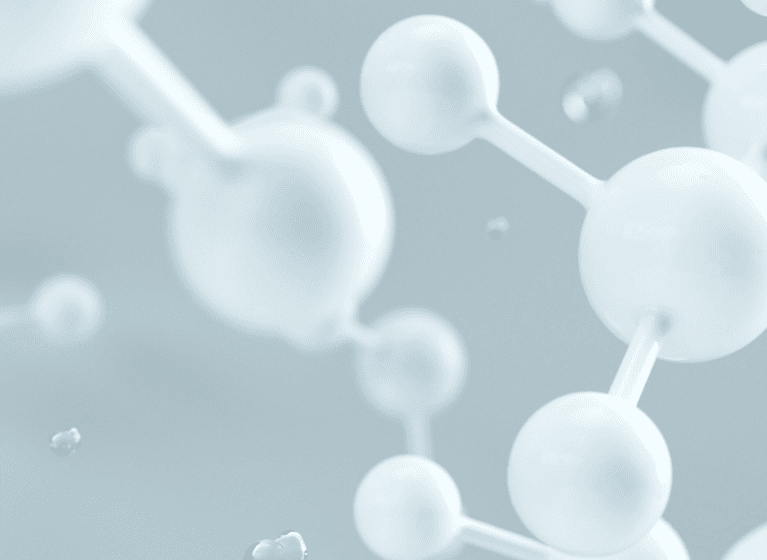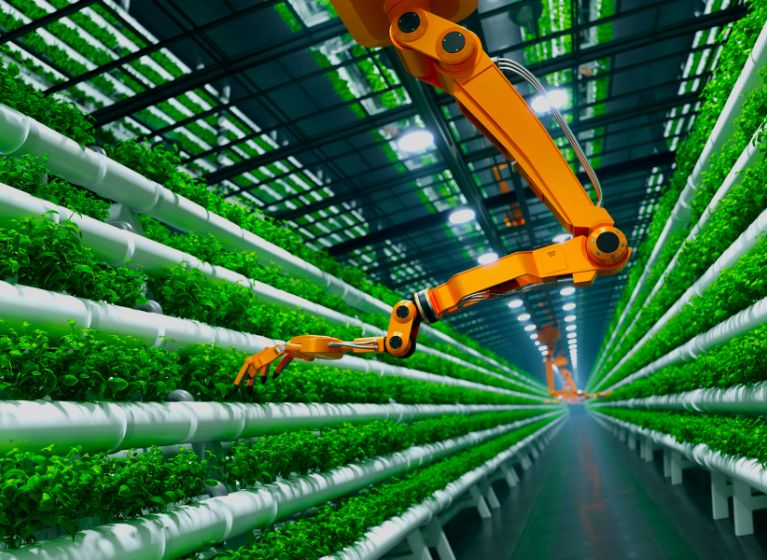Despite the predicted future growth of alternative energy sources, global reliance on fossil fuels will continue for many years. Therefore, meeting net-zero emission targets will require management of carbon dioxide (CO2) emissions resulting from fossil fuel use over the coming decades, and carbon capture will likely play a major role in achieving this goal.
Accordingly, we expect to see future increased levels of innovation in carbon capture technologies and in this article we briefly review currently available carbon capture technologies and discuss the apparent recent stagnation in related patent filing activities.
Background
Figure 1 illustrates the global total primary energy supply in the Net Zero Emission (NZE) Scenario in exajoules (EJ), as recently published by the International Energy Authority (IEA) in Energy Technology Perspectives 2023.
Figure 1: Global total primary energy supply in the NZE Scenario
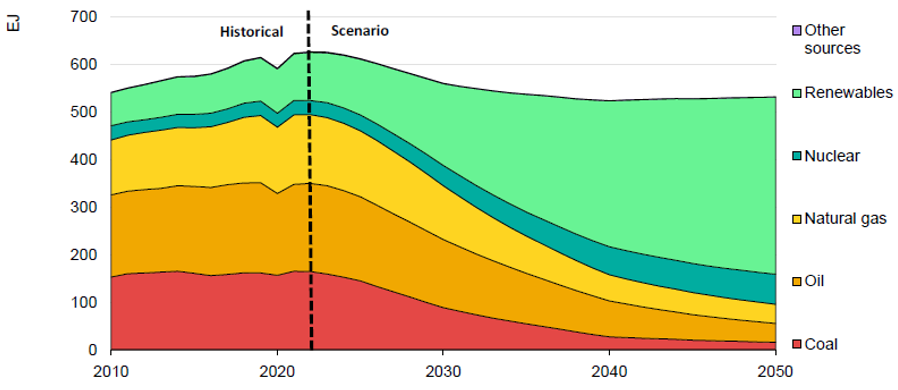
IEA 2023; Energy Technology Perspectives 2023, https://www.iea.org/reports/energy-technology-perspectives-2023, License: CC BY 4.0
In the NZE Scenario, the share of fossil fuels is predicted to decrease from about 80% in 2021, to less than 20% in 2050. The main sources of CO2 emissions are the burning of fossil fuels (coal, oil and natural gas) in power plants as an energy source, and industrial processes, such as steel, chemical and cement manufacture. Carbon capture will play an increasingly important role in managing CO2 emissions, growing from around 45 Mt in 2022 to 1.2 Gt in 2030 and 6.2 Gt in 2050. These represent significant growths from 2021 levels of about 30x and 155x respectively.
Carbon Capture and Storage
Carbon Capture and Storage (CCS) refers to a number of technologies that can combat atmospheric CO2 levels by reducing CO2 emissions. These technologies capture the CO2 generated by burning fossil fuels before it is released into the atmosphere. The captured CO2 is then compressed and transported to a storage site, for example geological formations such as vacated oil or gas reservoirs.
CCS may also be referred to as CCUS (Carbon Capture, Utilisation and Storage) wherein the captured CO2 is used for some downstream purpose, such as enhanced oil recovery (EOR) or for producing chemicals.
According to the International Energy Authority, Carbon Capture, Utilisation and Storage accounted for the reduction of 45 Mt CO2 globally in 2022. This is projected to rise to 220 Mt CO2 in 2030 based on announcements by project developers. However, even if all planned projects are implemented, this will fall well short of what is required by 2030 in the Net Zero Scenario. Figure 2 illustrates this significant predicted shortfall by the yellow bar.
Figure 2: Capacity of large-scale CO2 capture projects, current and planned vs. the Net Zero Scenario, 2020-2030
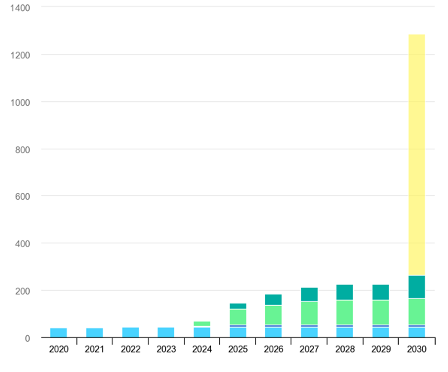

IEA 2022; Carbon capture, utilisation and storage, https://www.iea.org/fuels-and-technologies/carbon-capture-utilisation-and-storage, License: CC BY 4.0
Carbon capture technologies
There are two main carbon capture technologies currently available, these being amine capture and membranes.
Amine capture
The use of amines to capture CO2 has been known for many years and this is the only technology currently utilised at industrial scale. It involves bubbling CO2 containing gas through a liquid amine which absorbs the CO2 from the gas. Treatment of the absorbed CO2 with steam releases the CO2 and regenerates the amine for further use as an absorbent. Current amine based carbon capture processes may possess drawbacks such as low absorption and desorption rates of CO2, partial decomposition of the amine over time, and inability to achieve high CO2 capture capacity at low energy consumption. Additionally, the amines employed may be corrosive to plants and equipment, reducing their operational lifetime.
Membranes
Membranes operate by allowing CO2 to pass through the membrane more quickly than the other constituents of a gas mixture. As a result, the gas passing out the other side of the membrane is enriched in CO2 relative to the gas entering the membrane.
A significant challenge for such membranes has been the balance between permeability and selectivity. When the membrane permeability is high, gas quickly passes through the membrane. However, high membrane permeability is usually associated with low selectivity, meaning that nitrogen, or other constituents of the gas, also pass through the membrane thus reducing the ratio of CO2 to other gases in the mixture. Therefore, less CO2 is ultimately captured.
Membranes may include polymers, such as cellulose acetate, polyacetylene, polyaniline, polyetherimides, polycarbonates, poly(ethylene oxide) and polysulfone, and inorganic membranes include zeolites, perovskites and metal organic frameworks. The inorganic membranes usually have improved stability relative to polymeric membranes, particularly under harsh operating conditions.
Carbon capture patents
Given the need for increased innovation in carbon capture technologies to achieve NZE targets, a review of global patenting trends in the last 20 years should give an indication of momentum in this area.
Figure 3 illustrates the number of international patent applications filed in the B01D 53/62 International Patent Classification (separation of carbon oxide gases or vapours) between 2000 and 2021. International patent filings in this classification are used as a fair metric for important global inventions in CCS. The data shows a clear increase in international patent filings from 2000, with a rapid increase between 2005 and 2013. Coincidently, this increase aligns with the commencement of the Kyoto Protocol in 2005 and the first commitment period of the protocol, which ended in 2012. However, in the last 10 years international patent filings appear to have trended downwards and stagnated from around 2015 onwards. It should be noted that there does appear to be a recent uptick in international patent applications from 2019, but further data is required to verify if this is an emerging trend.
Figure 3: Number of international patent applications per year between 2000 and 2021 in the B01D 53/62 IPC classification.
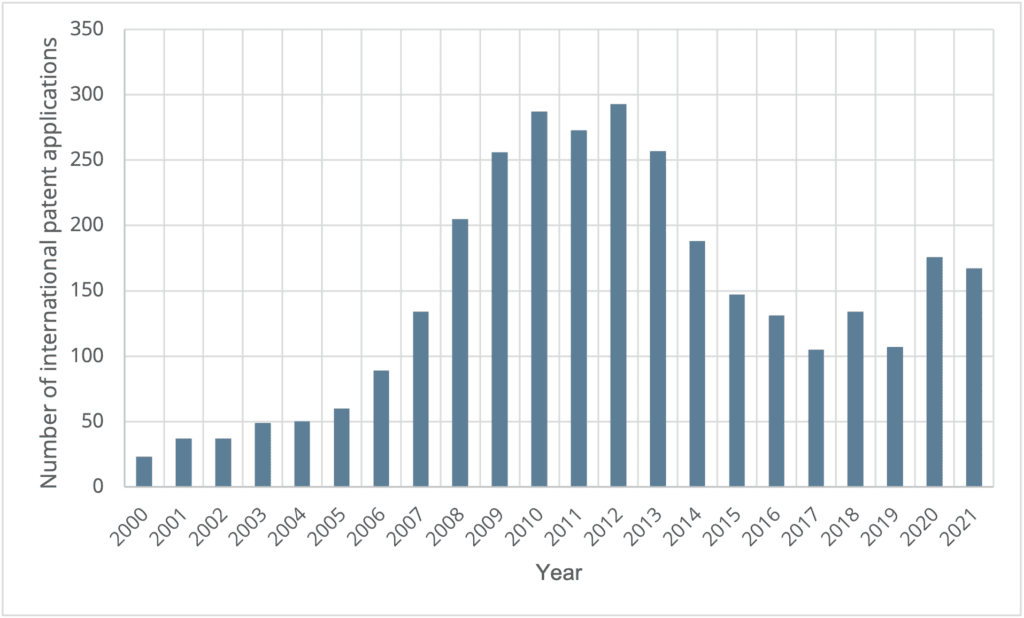
In terms of international patent filings specifically directed to amine capture and membrane technology, searches including “amine” or “membrane” as an additional keyword in the search string showed a similar trend to international filings as a whole.
Given this surprising global data, further analysis was conducted on applications filed in two of the major patent filing jurisdictions in this space, these being the United States and China. This data (shown in Figure 4) shows that the international patent application trend in CCS patent filings is roughly mirrored by US applications, although with a more sustained decline following the 2013 peak. Interestingly, Chinese patent applications buck this trend, with sustained growth during the 2013 to 2021 period, which appears to be largely driven by Chinese originating applications as evidenced by the same trend being observed when limiting applications to those with a Chinese priority filing. This is further confirmed by comparing the difference between Chinese applications with a Chinese priority and all Chinese applications (to give an indication of the number of Chinese applications by non-Chinese applicants). The number of non-Chinese originating applications in China follows the same trend observed for US applications and for international applications. This skewing of Chinese patent filing data due to large numbers of Chinese applications being filed only in China is observed in numerous other technical fields.
Figure 4: Number of patent applications in the US, CN, CN with a CN priority, and the difference between the total number of CN applications and CN priority applications (CN-CN priority), per year between 2000 and 2021 in the B01D 53/62 IPC classification.
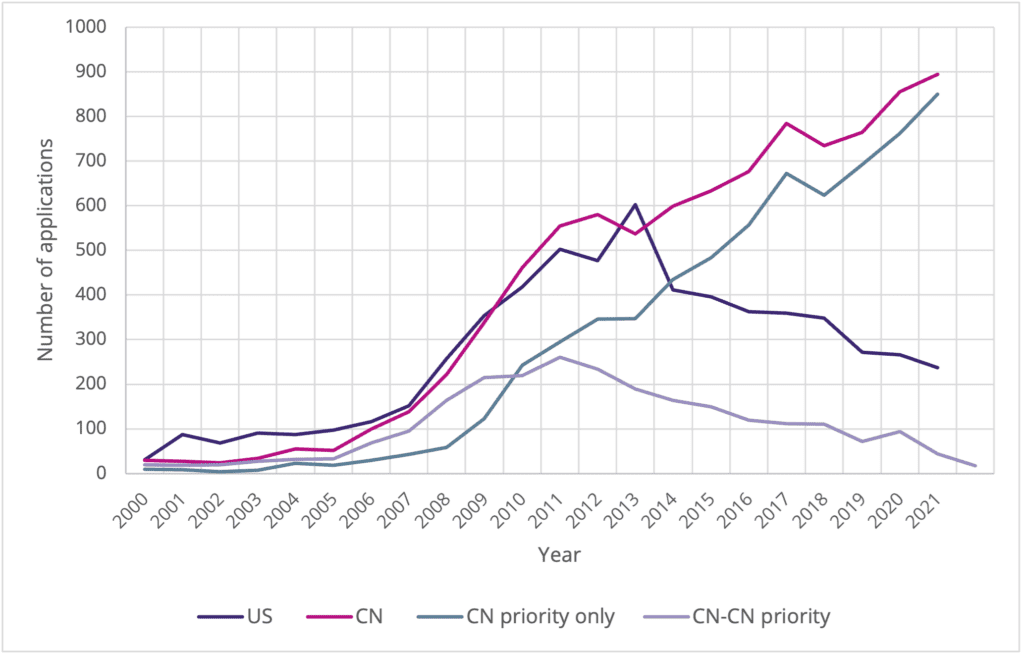
Concluding remarks
Although implementation of CCS technology will be required to meet current NZE targets, the recent trend in global patent filings suggest that innovation in this space is not as high as it needs to be, and may have stalled. The sustained growth in CCS patent filings in China appears to be mostly attributed to Chinese applicants, but this growth has not yet translated to an increase in international filings, which suggests a large proportion of these Chinese inventions are only being protected domestically. Given the immediate need to commercialise CCS technologies, it is possible that there will be a future innovation revival in the field with global patent filings returning to increasing numbers.
FPA attorneys possess a diverse range of technical skills and experience relevant to all aspects of the CCS sector, ranging from academic research to industrial process chemistry, and are well placed to assist in identifying and protecting new developments, as well as advising on the CCS patent landscape.


